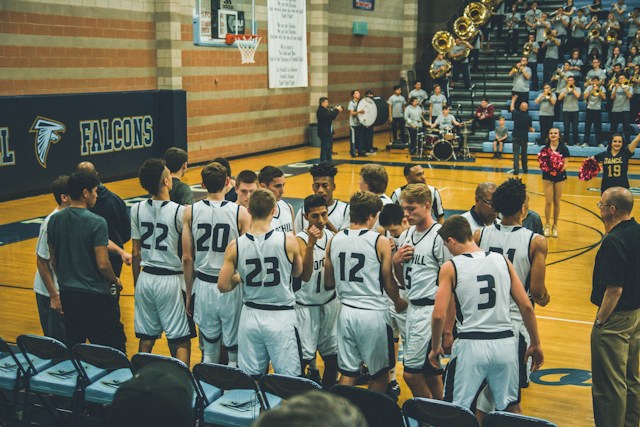Motor learning is a vital aspect in the development of any skill, particularly in the realm of sports. As coaches, it’s your responsibility to ensure that your players not only understand the skills required for their sport but also can execute them effectively and in diverse environments. This article delves into the foundations of motor learning and provides actionable advice on how you can apply these principles to enhance your basketball players’ shooting skills.
Understanding Motor Learning
Motor learning revolves around the acquisition or modification of movement. It involves understanding how people learn and acquire new motor skills, how they perfect an existing motor skill, and how they relearn skills that have been damaged or lost. Motor learning is all about practice – it shapes the acquisition and refinement of skills.
Also to read : What’s the Effect of Mental Imagery on Free-Throw Performance in Basketball Players?
Motor learning is particularly critical in sports where performance depends heavily on the ability to execute complex movements with precision and accuracy. In basketball, shooting is one such skill that requires a high level of motor learning. To enhance motor learning in your players, it’s necessary to understand the different stages of skill acquisition.
The Stages of Skill Acquisition
The process of acquiring a new motor skill often involves three stages: the cognitive stage, the associative stage, and the autonomous stage. Understanding these stages can help you tailor your coaching strategies to the distinct needs of your players at each stage.
Also to discover : What Is the Role of Virtual Wind Tunnels in Optimizing Cyclists’ Time Trial Positions?
Cognitive Stage
In the cognitive stage, beginners try to understand the task and what is required to perform it. They may make many mistakes as they test out different strategies to accomplish the task. Feedback from coaches is crucial during this stage. As a coach, your job is to provide explicit instructions and demonstrations, helping players visualize the correct movements.
Associative Stage
The associative stage is where players start to refine their skills. They’ve learned the basics of the movement and are now trying to smooth out the kinks. Here, less explicit feedback is needed. Instead, encourage players to self-analyze their performance, to become more aware of their movements and how they can be improved.
Autonomous Stage
The last stage, the autonomous stage, is where the motor skill becomes automatic. Players can perform the task without much conscious thought, allowing them to focus on other aspects of the game. In this stage, coaches should introduce varying constraints, like changing the environment or introducing pressure from opponents, to ensure that the skill can be executed in diverse conditions.
Effective Practice Design
As a coach, it’s essential to design practices that promote motor learning effectively and efficiently. The key is to create an environment that encourages players to engage in active problem-solving and decision-making. Variables such as the type of practice, the amount of feedback, and the practice schedule can significantly influence motor learning outcomes.
Variable Practice
Variable practice involves practicing the same skill in a variety of ways or under different conditions. For example, you can have players shoot from different positions on the court or against varying levels of defensive pressure. This type of practice promotes flexibility and adaptability, and it’s especially useful for transferring skills to a game situation.
Feedback
Feedback can be a powerful tool in motor learning. It helps players understand what they are doing right or wrong and how they can improve. However, the timing and amount of feedback can impact its effectiveness. It’s typically more beneficial to gradually reduce feedback as players become more familiar with the skill, fostering the development of self-assessment capabilities.
Practice Scheduling
The scheduling of practice can also influence learning outcomes. Distributed practice, where practice is broken up into multiple sessions with rest intervals in between, has been shown to be more effective than massed practice, where the skill is practiced in one long session.
Group and Individual Differences
Lastly, it’s vital to consider group and individual differences when teaching motor skills. Each player is unique, with different strengths, weaknesses, and learning styles. Therefore, it’s important to customize your coaching approach to fit the individual needs of each player.
For instance, some players may prefer and benefit more from visual demonstrations, while others may prefer verbal explanations. Some players may require more time to understand and perfect a skill, while others may grasp it relatively quickly. Understanding these differences and adapting your coaching strategies accordingly can significantly enhance the learning and performance of your players.
Remember, motor learning is a complex process that involves much more than simply repeating a task until it is mastered. It requires thoughtful practice design, effective feedback, and an understanding of individual differences. As a coach, your role is to facilitate this process, creating an environment that promotes learning, engagement, and ultimately, better performance on the court.
Implicit and Explicit Learning in Motor Skill Acquisition
The methods used to instruct and learn motor skills play a significant role in the development of basketball shooting skills. Understanding the difference between implicit and explicit learning is essential in developing an effective coaching strategy.
Explicit learning happens when players are given explicit instructions and knowledge about the movement patterns they’re expected to perform. For instance, when teaching the free throw, coaches may give specific instructions about the angle of the elbow, the release point, the arc of the shot, and the follow-through. Explicit learning leans heavily on the working memory, which can handle only a limited amount of information at a time.
In contrast, implicit learning happens without the learners being consciously aware they are learning. Techniques like analogy learning are often used in this process. For instance, instead of breaking down the free throw into specific parts, the coach might instruct the player to imagine "tossing a ball into a bucket". The player is not consciously trying to remember each movement pattern, but the desired movement patterns are implicitly learned.
Both implicit and explicit learning methods have their advantages and should be used strategically depending on the stage of skill acquisition, the complexity of the skill, and the individual learning style of the player. In the initial stages of learning a skill, explicit strategies can be beneficial. However, as players progress and begin to automate their skills, implicit strategies can help reduce the load on working memory, allowing players to focus their attention on other aspects of the game.
Decision Making and Attentional Focus in Basketball Shooting
Beyond the physical execution of the shot, basketball shooting also involves decision making and attentional focus. Coaches need to incorporate these elements into their instruction to enhance motor learning effectively.
Decision making in basketball shooting involves choosing when to shoot, from where, and how (jump shot, layup, free throw, etc.). A player’s decision-making ability can greatly influence their shooting effectiveness and overall performance. Coaches can enhance players’ decision-making skills by incorporating decision-making drills into practice, allowing players to experience various game-like situations.
Attentional focus refers to where a player’s attention is directed during skill execution. There are two types of attentional focus: internal and external. Internal focus is when a player is concentrating on their body movements, while external focus is when a player’s attention is directed towards the outcome of the movement or the interaction with the environment. Research in sport psychol suggests that an external focus of attention often results in better performance and more effective motor learning.
As a coach, it’s crucial to understand these aspects and incorporate them into your coaching. For example, during shooting practice, instead of asking players to focus on their arm movement (internal focus), you might instruct them to focus on the rim or the trajectory of the ball (external focus).
Conclusion
Motor learning is a complex yet crucial element in coaching youth basketball shooting skills. It involves understanding and applying various principles such as the stages of skill acquisition, practice design, implicit and explicit learning, attentional focus, and decision making. Remember, each player is unique. Therefore, it’s necessary to tailor your coaching approach to fit the individual needs of each player, fostering an environment that promotes engagement, learning, and ultimately better performance on the court.
In conclusion, motor learning is not just about repeating a task until it’s mastered. It’s about understanding how we learn and adapt our movements, and how we can apply this knowledge to improve our performance. As a coach, your role is to facilitate this process, using your understanding of motor learning to guide your players towards their best potential in basketball shooting.






